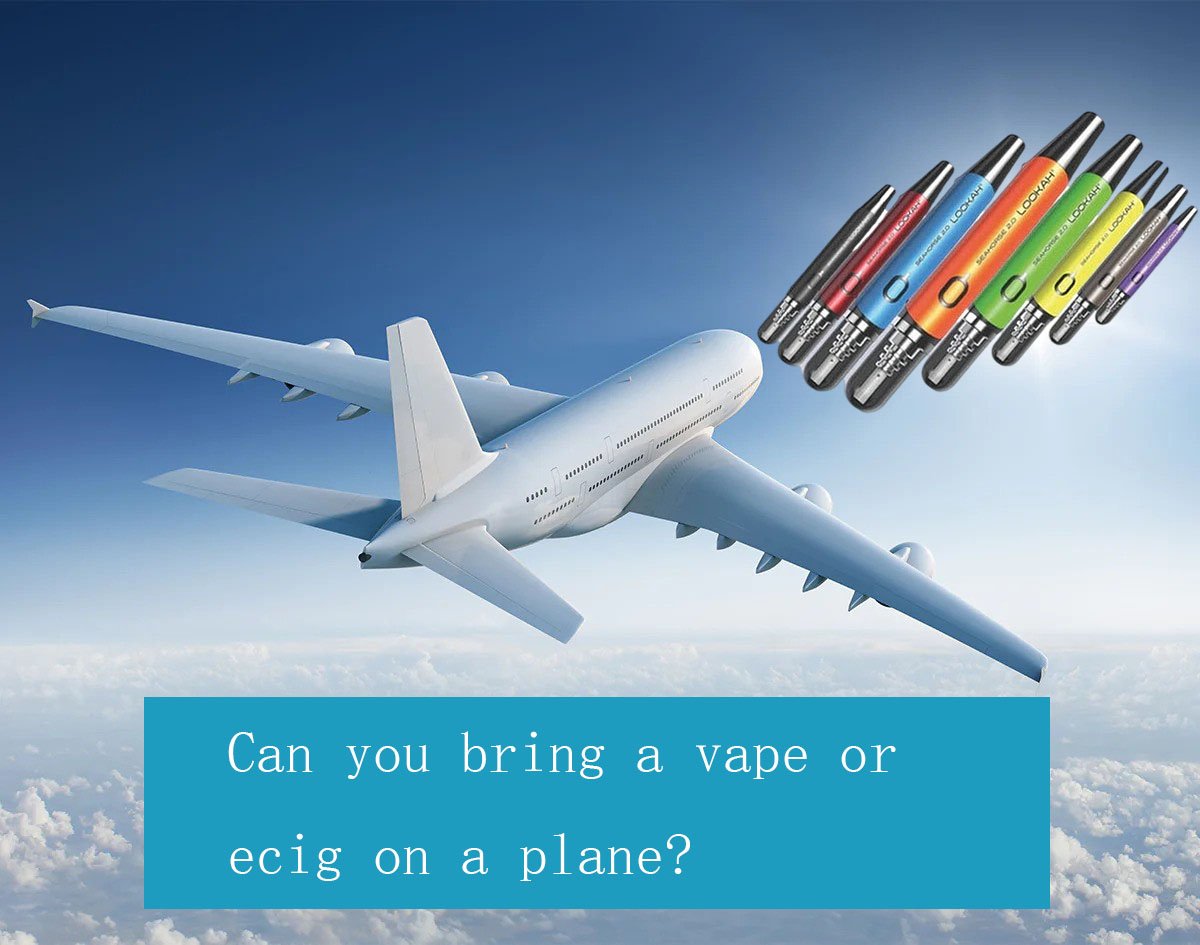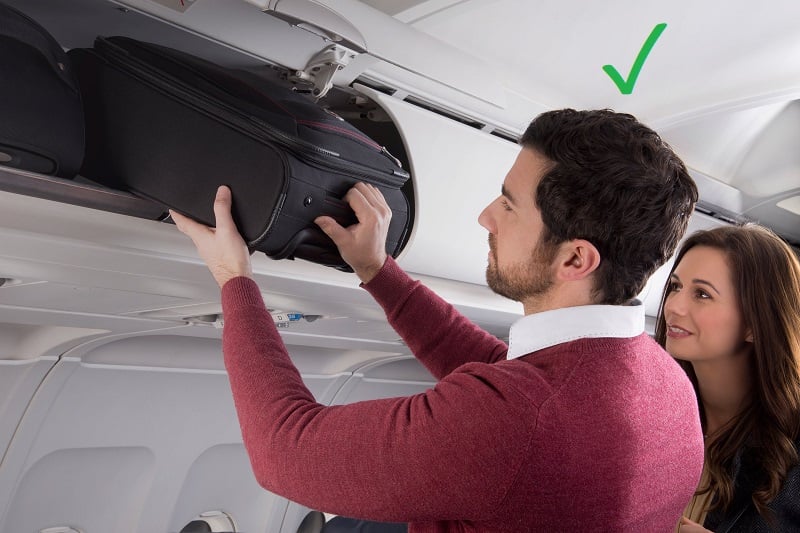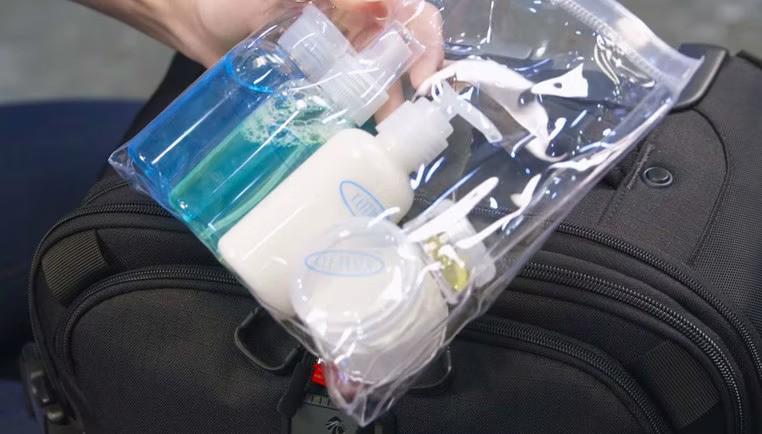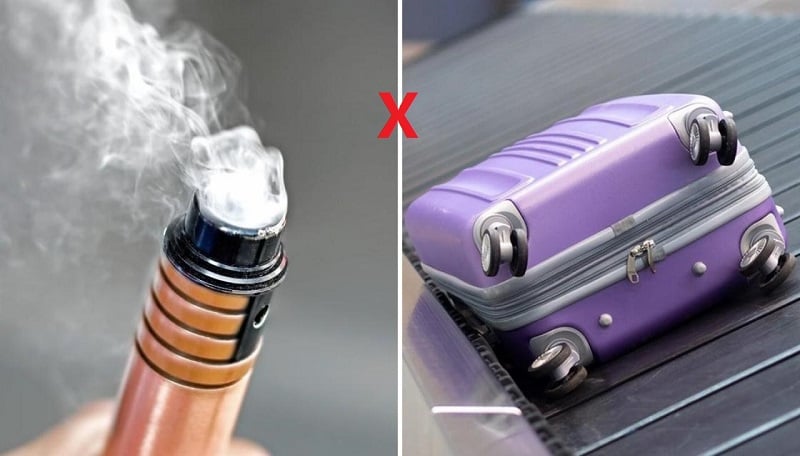Can you Bring a Vape or Ecig on a Plane?

Vapes, also known as e-cigarettes or electronic cigarettes, are compact handheld vaping devices designed to provide a portable, convenient and discreet way to consume nicotine.
They are popular among youth and young adults because of their enticing flavors and perceived lack of negative health effects.
If you enjoy vaping and have an upcoming flight, you’re probably wondering whether you can take e-cigarettes on an airplane. Also, Staying informed is vital for a smooth airport experience.
In this article, We will discuss what you need to know about bringing your vapes and e-liquids on your next flight, and doing so without breaking any rules or risking any fires.
Can you bring a vape or e-cig on a plane?

According to the Transportation Security Administration (TSA) regulations, you are allowed to bring your vaping devices, e-cigarettes, or vape pens on a plane as a carry-on item.
However, there are certain guidelines and precautions you need to follow to ensure compliance with TSA regulations and to prevent any potential safety hazards.
Carry-on Only: Electronic smoking devices, including vapes, e-cigs, are allowed only in carry-on baggage. They are not permitted in checked luggage.
Vapes are strictly forbidden in checked bags due to the fire risks associated with their lithium-ion batteries, which can enter an uncontrollable, self-heating state.
Battery Restrictions: Each lithium ion battery must not exceed a Watt-hour (Wh) rating of 100 Wh. As for lithium metal batteries, the lithium content should not exceed 2 grams. It's important to check the battery specifications and ensure they meet these requirements.
Battery Safety: To ensure safety, detach the batteries from your vape device or mod and place them in a plastic case or dedicated battery case.
This prevents contact with metal objects that could cause short circuits or overheating. Always keep battery cases in your carry-on bag when traveling.
Liquid Restrictions: Ensure any spare vape liquids meet the TSA's 3.4-ounce (100 ml) limit per container and the standard one-quart, clear, plastic bag rule.
You can pack up to 100 ml of vape refill liquid in your carry-on bag. If you have more than 100 ml, it will need to be packed in your checked luggage.
Prohibited Use: You can’t use or charge the device while aboard the flight under any circumstances.
Device Precautions: Ensure that your vape device is powered off before packing it in your carry-on, This helps prevent accidental activation during the flight.
When you go through airport security, you will need to remove your vape device from your carry-on bag and place it in a bin, similar to how laptops are screened separately.
TSA officers will visually inspect it, and you may be asked to turn it on to demonstrate that it is a functioning device.
How do I safely pack my vape in my carry-on baggage?
Ever been to an airport and freaked out last minute because you didn't realize that you needed to store your vape supplies a certain way and TSA threatens to throw it all anyway!
According to the TSA, Passengers are required to take effective measures for preventing accidental activation of the heating element of the device when transporting the devices.
If you do not want to encounter that, Here are a few ways to ensure that your vape and its batteries are prevented from accidentally activating.
Remove the battery from the electronic cigarette. Vape batteries should be carried in their original packaging or in a protective case to prevent damage or short circuits.
Loose batteries should not be stored with metal objects, keys, or coins, as this can cause safety concerns.
Use a protective cover, safety latch, or locking device on the electronic smoking device's heating coil activation button.
Explore More: Will TSA take my vape out of my carry-on luggage?
Can I travel With Vape Juice on an Airplane?

It is perfectly legal to take e-liquids on a plane. However, there are certain rules to follow when it comes to taking any liquid on a flight so you must be sure you know how much you can take with you and how your liquids need to be packaged.
Your e-juice is subject to the general 3-1-1 Liquid Carry-On Rule established in 2006 by the TSA that basically dictates that:
3 – All liquids packed into carry-on baggage must be placed in bottles not exceeding the amount of 3. 4 ounces (or approximately 100 milliliters).
1 – All of your bottles of liquid must fit into a single, clear, zip lock bag not to exceed 1> quart.
1 – Each passenger is allowed only 1> quart-sized bag.
So, While you can bring e-liquids and vape juice through TSA, it needs to be less than 100 ml like any other liquid.
You should also be aware that vape juices will count towards your overall carry-on liquid allowance so you may want to take this into account if you’re planning to take other liquids, such as water, on board with you.
The rest of your e-juice can be packed away as part of your checked luggage but should be packed well and secured that the potential of accidental spillage doesn’t end in soaked, ruined clothing.
By following these guidelines, you can streamline the security process and ensure a hassle-free experience when carrying e-liquids on a plane.
Can i bring a vape in my checked luggage?

Vapes are not allowed in checked bags due to safety concerns.
Lithium-ion batteries, which are contained in vapes, are considered dangerous goods due to their risk of smoke, fire and extreme heat.
In addition, airplane cargo holds are not temperature-regulated. The temperature can drop to freezing or rise to toasty based on weather and flight patterns, which can causes lithium-ion battery explode and catch fire.
These chemically started fires also release toxic fumes, making it dangerous for crew to even fight the fire.
If you fail to adhere to this rule, you might lose your devices if luggage handlers x-ray them.
TSA might even decide to neglect your Checked luggage at the departure airport.
How many vapes can you bring on a plane?

TSA has no regulations on the number of e-cigarettes you can carry on a plane.
You need to check with your airline on any limitations on the number of devices that can be carried for personal use by a passenger.
Different airlines have different specific regulations on lithium-ion batteries and vaping devices.
Many airlines allow for 15-20 vapes to be taken onboard with you but you must check beforehand with the airline.
Remember that this allowance isn’t solely for vape batteries – this is your total electronic devices allowance.
Can we carry vape in international flight?

Vapes are allowed to carry on international flights when you are traveling to a country where they are legal.
If you are traveling to a country where vapes are not legal, you'll need to research the specific policies regarding visitors bringing vapes.
Vapes are banned in 34 countries, including Argentina, Brazil, Brunei Darussalam, Cabo Verde, Cambodia, Ethiopia, Gambia, India, Iran,Iraq, Jordan, Laos, Malaysia, Mauritius, Mexico, Vanuatu, Venezuela, New Zealand, Nicaragua, North Korea, Norway, Oman, Panama, Qatar, Singapore, Sri Lanka, Suriname, Syria, Thailand, Timor-Leste, Turkey, Turkmenistan, Uganda, Uruguay.
Can you bring a vape on your flight if you are under 21?

You must be at least 21 years old in USA to purchase vape products. However, The TSA is not involved in age related enforcement.
State governments are responsible for the implementation of such vape laws, whereas TSA's sole purpose is to ensure passenger safety.
Therefore, you may can bring a vape on airplane even if you are under 21, just make sure it kept in the carry-on baggage rather than in the check-in luggage.
Can you Vaping on a Plane?

Unfortunately, no. There is no vaping (or smoking) permitted on any airliner, and you are also responsible for preventing your vape from "firing" (button press, heating up) while in the air.
Attempting to vape on a flight could result in significant fines, criminal charges, or being banned from future flights with that airline.
Can you Vaping in an Airport?

Many airports have designated smoking areas, but it's crucial to note that not all of them allow vaping.
Always check the airport's rules or ask the staff for guidance. In some cases, vaping indoors may result in fines or other penalties.
What vaping alternatives on a long haul flight?

A better idea is to find a suitable nicotine alternative to use while flying.
There are nicotine chewing gums, lozenges, and patches. Most of these products are legal to use in aircrafts and in airports.
They’re not as enjoyable as vaping, but they’re not going to get you in trouble with airport security either.
Conclusion
Flying with vapes or e-cigs in the USA is legal as long as you follow the rules and regulations in place. Always pack your electronic cigarettes in your carry-on luggage.
It must not be used on the plane and must not be placed in your checked luggage.
You can pack your vaping juice inside carry-on or checked luggage but be aware that the juice can leak from the e-liquid vials. Therefore, you need to pack them accordingly.
By keeping these considerations in mind you’ll be well-prepared for your next adventure with your beloved vape cartridges. No more unexpected surprises at the airport – just smooth, relaxed, and safe travels ahead.
There are exceptions though, so always check with your airline before you travel. And remember to check the law around e-cigarettes at your destination too.
Also Read: Do Vapes Go Off in Metal Detectors?
